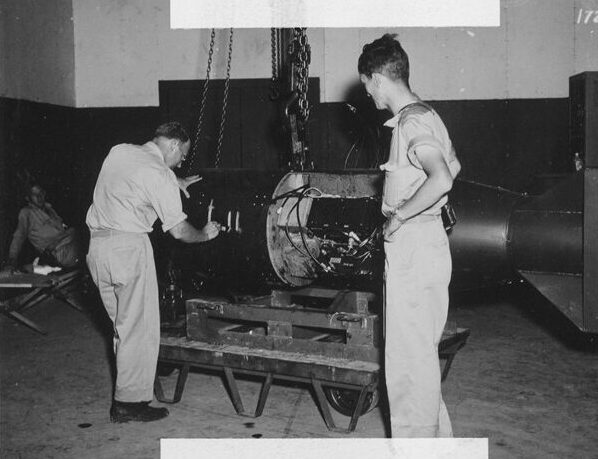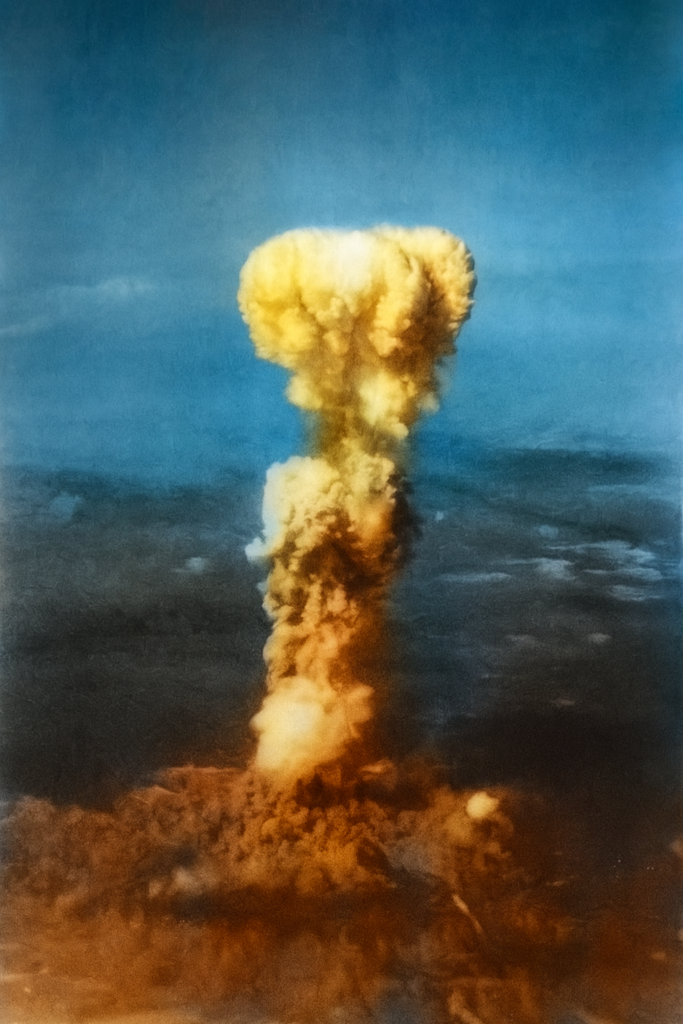In 1944, Col. Paul Tibbets was summoned to Wendover Army Air Field in Utah for what must have seemed like an impossible mission. He was ordered to create and organize a combat group with the sole purpose of delivering a weapon that didn’t even exist yet.

Operation Centerboard Trained Crews on Nonexistent Bombs
Tibbets’ name might sound familiar to World War II history buffs. He would pilot the B-29 Superfortress Enola Gay as it dropped the atomic bomb codenamed “Little Boy” over the Japanese city of Hiroshima on August 6, 1945. But before he could fly into the history books with the first nuclear weapon, he had to figure out how to get it to Japan.
Tibbets and his aircrews not only had to train on delivering a then-nonexistent bomb with an unknown explosive size or payload to an undetermined but (presumably) heavily defended enemy city, they also had to do it using aircraft specially designed to carry those nonexistent weapons. His aircrews all practiced at least 50 bombing runs in remote areas of the United States. There, they dropped dummy bombs or “pumpkin” bombs – conventional explosives built by the Manhattan Project with the same characteristics as the “Fat Man” nuclear bomb.

After completing its training runs stateside, Tibbets’ 509th Composite Group and its special B-29 Superfortresses were transferred to the Pacific island of Tinian, along with their conventional pumpkin bombs. From there, they would drop high-yield explosives on targets on the Japanese Home Islands and their surrounding islands. They did it aboard aircraft with some less-than-subtle names, like “Top Secret,” “Strange Cargo,” Necessary Evil,” and “Up an’ Atom.”
Operation Centerboard Prepared for the First Nuclear Strike
Because he knew exactly why they were dropping these unusual bombs, Col. Tibbets himself was not allowed to fly over Japan in case he was shot down. By April 1945, they were ready to drop the real bombs, but training runs continued.
On July 16, 1945, the first successful nuclear detonation, the Trinity test, occurred in New Mexico. A few hours later, the USS Indianapolis departed Hunters Point Naval Shipyard in San Francisco carrying the non-nuclear parts of the “Little Boy” atomic bomb, along with its uranium core. Its mission was a high-speed delivery to Tinian. The rest of its uranium part would arrive by July 29th via cargo planes.

Operation Centerboard Hit Hiroshima and Planned Strikes
Col. Tibbets boarded the “Enola Gay” on August 6, 1945, for a mission codenamed Centerboard I, dropping the first atomic bomb over the city of Hiroshima. Dropped at 8:15 a.m., the bomb fell for 44.4 seconds before detonating, killing as many as 140,000 people.
In the days that followed, Japanese officials confirmed that the United States did drop an atomic bomb on Hiroshima. The Japanese military believed the U.S. couldn’t have more than a handful of the weapons, so they decided to endure the bombings, rather than surrender. Preparations for Centerboard II, an atomic attack on Kokura, were made for August 9, 1945.

Maj. Charles Sweeney took off from Tinian aboard a B-29 dubbed “Bockscar” at 3:47 a.m. that day. After a rendezvous with his instrument and observation planes, they proceeded to Kokura. They arrived at 10:44 only to find their target “obscured by heavy ground haze and smoke.” Sweeney made three attempts at a bombing run but couldn’t see the target, so he moved on to the secondary target: Nagasaki.
Japan was dead wrong about enduring the bombings. Had it not surrendered after the bombing of Nagasaki, the United States was prepared to drop a third bomb, appropriately dubbed “Third Shot,” on August 19th. Three more would come in September and another three in October. Centerboard III targets would have included Kokura, Niigata, and Yokohama.
Read About Other Battlefield Chronicles
If you enjoyed learning about the Operation Centerboard, we invite you to read about other battlefield chronicles on our blog. You will also find military book reviews, veterans’ service reflections, famous military units and more on the TogetherWeServed.com blog. If you are a veteran, find your military buddies, view historic boot camp photos, build a printable military service plaque, and more on TogetherWeServed.com today.

0 Comments